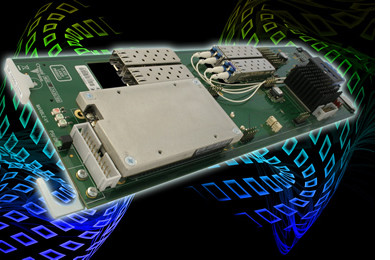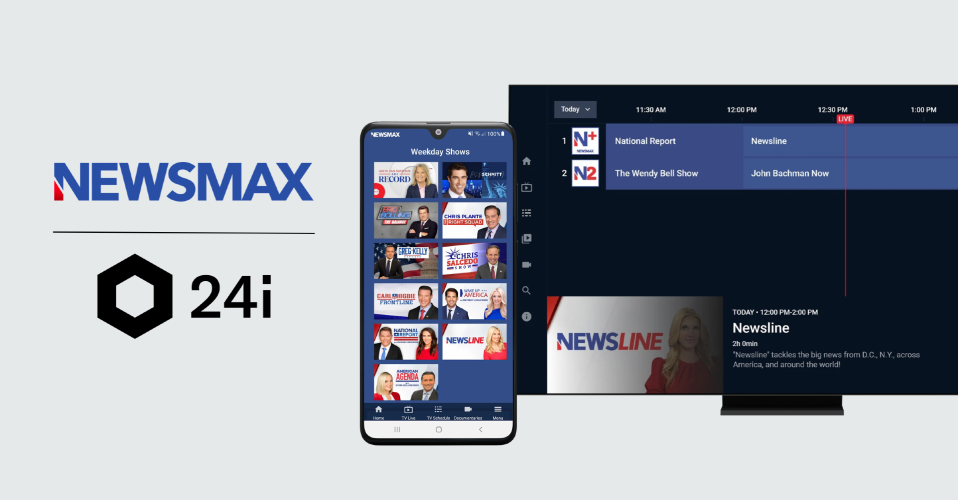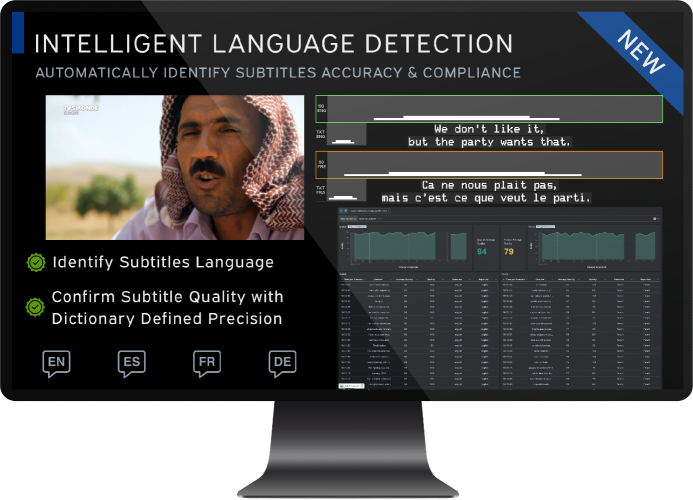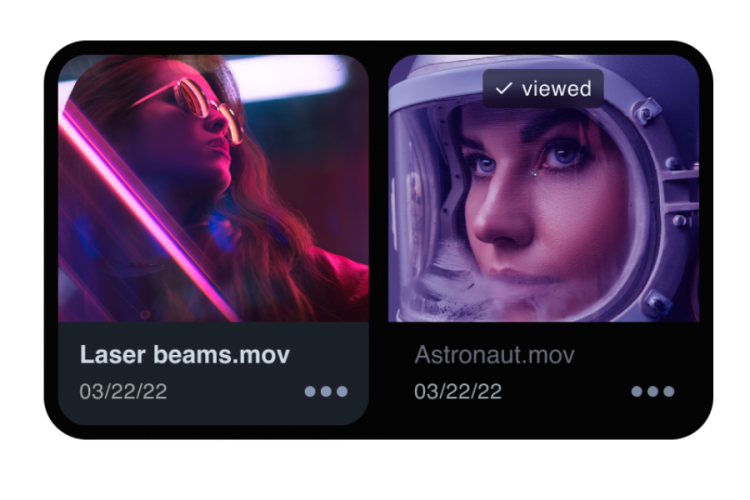On Booth N2516 at the 2018 NAB Show Crystal Vision will be showing its flexible IP platform, the MARBLE-V1 media processor hardware and the initial six software apps which run on it. These apps are IP gateways between SDI and SMPTE 2022 or 2110, and IP to IP translators for making adjustments to IP flows – including protocol conversion between ST 2022 and ST 2110. Designed for smaller projects and ideal for housing MARBLE-V1, the new Vision 1 1U frame brings further flexibility to the Vision frame system and incorporates the usual Vision benefits including numerous signal outputs. Crystal Vision will also be showing the keyers, video delays and fail-safe routing switches from its well-established Indigo frame system, including the acclaimed Safire 3 real-time chroma keyer which in addition to gaining new features has been significantly reduced in price – opening up its high quality chroma keying to systems that previously had to rely on the chroma keyer in their mixers.
The MARBLE-V1 media processor is the industry's most flexible solution to video over IP. Crystal Vision's IP products are software apps which run on MARBLE-V1 hardware, with apps that are bought with the hardware able to be replaced with different apps as needs change. Featuring a powerful CPU/GPU processor that runs Linux and a Crystal Vision developed operating system layer which is the connecting fabric to the software-defined apps, MARBLE-V1 is a card housed in the Vision frames. It has six bi-directional SDI connections, four 10GbE SFP+ network interface ports, eight bi-directional discrete AES stereo channels (via the DIOP8 audio piggyback) and multiple referencing capabilities.
Crystal Vision's feature-packed SMPTE 2110 apps – which run on the MARBLE-V1 media processor – will be making their world debut on Booth N2516. The SDI6-IP-2110 IP gateway app encapsulates SDI to uncompressed IP, converting up to six HD/SD or three 3Gb/s SDI input connections for output as ST 2110 over 10GbE links, with stream duplication ability for redundant output flows. The IP-SDI6-2110 IP gateway app de-encapsulates SDI from uncompressed 10GbE IP, converting to up to six HD/SD or three 3Gb/s SDI output connections, with flexible assignment of the converted ST 2110 flows from any combination of the two 10Gb/s input links. The IP-IP-2110 IP to IP translator app de-encapsulates and re-encapsulates SMPTE 2110 and 2022 flows (up to six HD/SD or three 3Gb/s) between up to four bi-directional 10GbE IP network interfaces. Designed to help broadcasters solve IP challenges, this unique product provides a bridge between ST 2022 and ST 2110 protocols as well as allowing changes to network settings. It can be used for network address translation, multicast to unicast address conversion and the creation of media firewalls. The three 2110 apps support AMWA NMOS IS-04 for discovery and registration and IS-05 for device connection management. SDP is read and written where appropriate, while data encapsulation and de-capsulation conform to ST 2110-40 standards. There are no limitations on VLAN support. System synchronisation and time-stamping is via PTP, adhering to the SMPTE ST 2110-10 standard. User definable traffic shaping makes the apps compliant in any media network: they can be configured per flow to use either N, NL or Wide. On the SDI6-IP-2110 de-embedded audio as well as external digital audio (input via the DIOP8 audio piggyback) can be routed to AES67 output flows in accordance with ST 2110-30 standards; on the IP-SDI6-2110 AES67 audio flows can be configured for embedding into the SDI outputs as well as being output as external AES via the DIOP8 audio piggyback. AES3 over IP is supported for non-PCM streams adhering to ST 2110-31. Signals are monitored for signal integrity including video black, video frozen, audio presence and PTP health, while available IP statistics include flow type, bit rate and packet loss.
Crystal Vision will additionally be showing its three SMPTE 2022 apps, which also run on the MARBLE-V1 media processor hardware. The SDI6-IP-2022 gateway app encapsulates SDI to SMPTE 2022 IP, while the IP-SDI6-2022 gateway app de-encapsulates SDI from 10GbE IP networks. The IP-IP-2022 IP to IP translator app is ideal for any SMPTE 2022 applications where network settings need to be changed in some way – such as network address translation and multicast to unicast conversion – as well as for 2022-6 to 2022-7 protocol translation. Useful features include clean switching between flows, sophisticated synchronising, PTP support, up to ten frames of video delay, unicast and multicast transmission support, signal status monitoring and traffic shaping.
The new Vision 1 frame brings further flexibility and choice to the Vision frame system by providing 1U housing for smaller projects requiring up to four cards, such as IP gateway projects which often involve one or two cards at a time. Like the Vision 3 3U frame, Vision 1 has the ability to handle higher bandwidth signals including IP and 4K (as well as SDI), and houses the MARBLE-V1 media processor as well as the 12 video and audio core interface cards from the Vision range – up and down converters, synchronisers, fibre optic transmitters and receivers, audio embedders/de-embedders and distribution amplifiers for analogue and digital video and audio. Other features that Vision 1 shares with Vision 3 include very powerful redundant power supplies (allowing increased card functionality), the same VR rear modules (providing numerous signal outputs), a common dual reference distributed to every card, complimentary SNMP, powerful remote backup and restore of all card settings and presets for added system security and two 1Gb/s Ethernet connections to the outside world for control and file transfer.
Crystal Vision's 'niche' products are always popular with NAB visitors, and the company will therefore also be showing product highlights from its well-established Indigo frame system, including chroma keyers, logo keyers, video delays and fail-safe routing switches. In addition to recently gaining improved live operation (following enhancements to its control panel), the Safire 3 real-time chroma keyer has been significantly reduced in price. Used by some of the most prestigious broadcasters in the world for adding realism to any virtual set, the new pricing makes Safire 3's high quality chroma keying available now to systems that previously had to rely on the lower quality chroma keyer in their mixers.
Based at Whittlesford near Cambridge in the UK and providing a full range of interface and keyers, Crystal Vision helps people transition through a range of technologies – from SD to HD and from HD to IP.




































